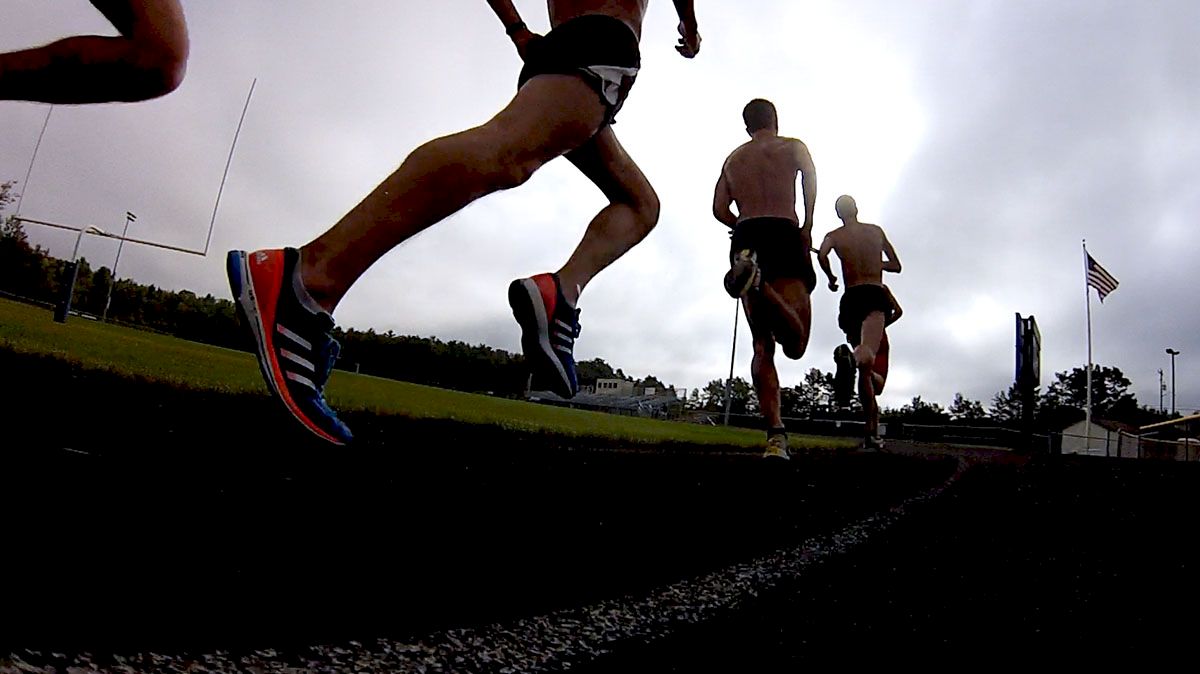Thinking on the Run: Association Vs. Dissociation
Thinking on the Run: Association Vs. Dissociation

What do you think about on the run? Without a doubt your thoughts, whatever they may be, have an impact on performance. Some runners may think performance is best when they focus on form, while others my have a pump-up song stuck in their head that they "sing" over and over. I even had a middle school teammate who told me that he pretended a particular girl's behind was a few meters in front of him and that he was chasing it. It is probably obvious that some patterns of thinking work better than others. I personally have experienced success when I am focused solely on running, but have struggled when I allowed my mind to drift to topics outside of running (I also tried the butt idea and didn't experience improved performance). Generally, focus can be associative or dissociative and there are performance implications based on the style an athlete uses. Here I hope to introduce these styles so that you can better understand your thought patters and the resulting performance implications from using a specific style.
Associative thoughts are based on the race or performance itself. While running, Schomer (1987) states these thoughts could include monitoring of bodily sensations such as respiration or muscle pain. Associative thoughts also include internal commands or instructions, such as "surge to that next person" or "relax the shoulders". An athlete in an associative state may also consider their present emotional state and have a thought such as "I feel light and fast today" or "I'm really mad that coach put me in the 10k and I have 15 more laps to go". Finally, according to Schomer (1987), association can also include thoughts about pace. The bottom line is that athletes who associate are focused on the task at hand and this only.
Athletes who dissociate, however, may think about things unrelated to the task at hand as a means of distraction. These dissociative thoughts, according to Schomer (1987) could include reflection on past events and planning for future events. Athletes who focus on the environment (looking at the trees or the pretty girls in the stands) or listen to music while running are also dissociating.
It may sometimes be more enjoyable to hum a song or work out problems of the day on a run, but associative thinking is related to the best possible running performances. This belief is based on the Morgan and Pollock (1977) study of marathon runners, which found that most runners used a dissociative style, where they may have tried to notice scenery on the course or sung a song in their head as a way to focus on something besides the pain of running a marathon. Yet elite marathoners used an associative style, instead focusing on breathing and feelings coming from the leg muscles. The monitoring of bodily sensations, according to Morgan and Pollock, helped runners relax so that they could achieve performance goals. Smith, Gill, Crews, Hopewell, and Morgan (1995) also found that the most economical distance runners reported dissociating less but focusing on relaxation more than did less economical runners. However, use of association did not differ between the economical runners and the less economical runners. The implication is that association itself is not what is responsible for improved performance, but it is instead the improved economy that typically comes through relaxation. But relaxation does not come easily during a painful event such as a marathon, so athletes must associate and think abut relaxing if they are to achieve such a state.
Is it necessary, or even desirable, to associate at all times while running? The answer is probably no, and in fact many elite runners drift between styles, even during the same run (Morgan, 1981). Athletes do tend to rate dissociation as a preferrable state (Gill & Strom, 1985), and many runners (even competitive ones) want to run just to clear their mind or enjoy a beautiful trial every one in a while. But for high intensity performances, when economy is a critical factor for performance, association may be the way to go.
References
Gill, D.L., & Strom, E.H. (1985). The effect of attentional focus on performance of an endurance task. International Journal of Sport
Psychology, 16, 217-223.
Morgan, W.P. (1981). Psychophysiology of self-awareness during vigorous physical activity. Research Quarterly for Exercise and Sport, 52,
385-427.
Morgan, W.P., & Pollock, M.L. (1977). Psychologic characterization of the elite distance runner. Annals of the New York Academy of Sciences,
301, 382-403.
Schomer, H. (1987). Mental strategy training programme for marathon runners. Internationl Journal of Sport Psychology, 18, 133-151.
Smith, A.L., Gill, D.L., Crews, D.J., Hopewell, R., & Morgan, D.W. (1995). Attentional strategy use by experienced distance runners:
Physiological and psychological effects. Research Quarterly for Exercise and Sport, 66, 142-150.